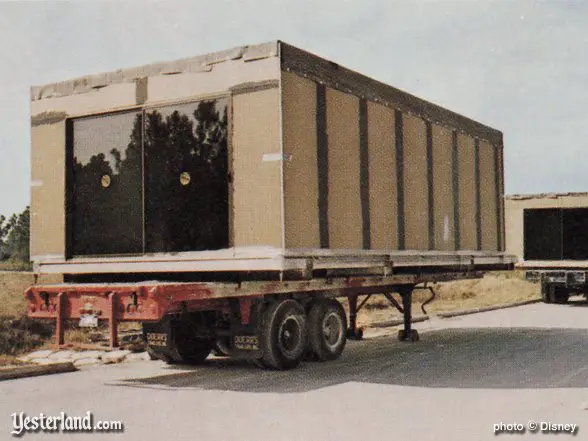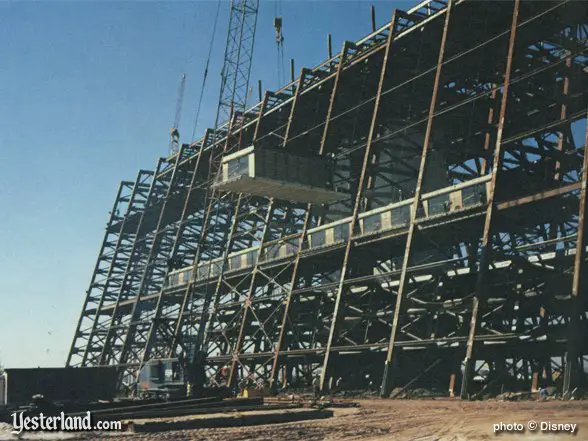- Joined
- Dec 10, 2011
- Messages
- 5,599
- Reaction score
- 2,717
I'm open to contradiction, but here's my paper for peer review: Beacon Hill is essentially "Old Disney" -- a series of fakes and novelties accumulated over the course of 220 years.
I'd like you to return to this thread when someone criticizes new developments as "too Disney" The reality is that all new things--and many old things--are built on repeated themes every bit as predictable as Fantasyland, Tomorrowland, EPCOT, or the Contemporary Resort.
Federal Style was, of course, a very modern style in 1800, and developers built a monoculture. Moving from the wooden North End to brick on Beacon Hill was a radical upgrade in residential building tech (it'd been popular in commercial structures and churches since the fire of 1711 and the "new" statehouse in 1713).
And the whole flat top of Beacon Hill was a marvel of terraforming: cutting down the old Beacon peak and throwing it into the Charles to create The Flat of the Hill. But I'm pretty sure that though the city had wanted to build residences in brick since the fire of 1760, that fire and two wars made the city too poor to build anything.
It was only post-revolutionary prosperity that meant that homes could be built of brick. It was fully "of its time" And cast iron for balconies was also a then-new tech (or, really, fairly "late Federal"). Enclosing Louisburg Sq in iron would have also been an extremely a la mode thing to do. Modern and theatrical (And an imitation of a trend in London)
.
Dark Painted Doors: An attempt from 1860 to seem relevant again.
It is 1860. The tall brownstones of Back Bay, with their large windows and new colors are redefining city living. The Bessemer Process (c. 1850) has made iron a cheap building material. Lathes mean woodwork can be turned, not hewn.
In 1860, Beacon Hill was looking tired. When built, it had to rely on the "Williamsburg" palette of pale blues, greens and yellows. But here come dark paint pigments as a new technology for extreme makeovers. Industrial waste (coal tar) was being transformed by chemists into the now-mandatory dark paint colors on doors.
Virtually every painted door on Beacon Hill is painted a color that wasn't practical until about 1860. Not quite lipstick on a pig, but paint on a door was a cheap way to give modern curb appeal in 1860, not authentic Federal.
Gas lamps from Dickens' day, which were all open-flame jets (pointing up) were all torn out at the dawn of electricity, the City made Beacon Hill the first Boston neighborhood to get electric street lights. The gas lights only came back when Natural Gas reached Boston from Texas & Louisiana by pipeline in the 1960s (replacing the Gassified Coal that had been in use for 140 years before that). The gas mantles were a tech from 1890--a last gasp from the Gas Light industry to triple light output for the same gas (versus open flames).
So when Texas gas made it possible to reinstall gas lighting, gas mantles were already "fake old" in the sense that Beacon Hill had only probably briefly (if at all) ever had fixtures with mantles. Another Disneyesque “Fake the past with modern technology” fitting Beacon Hills role as nostalgic theme park
I'd like help proving this next hypothesis:
Granite was a luxury good --for cathedrals, hospitals, and public markets--when it was introduced c.1800~1820. I can see that cobblestones would be marketed from the leftovers of all the granite work being done by Charlestown prisoners, but I have serious doubts about granite curbstones before 1840. (or even when the occasional grooved-granite sidewalk would date from— Probably 1850.
When were granite curbs introduced? And some old photographs of Pinkney seem to suggest they had concrete sidewalks for at time (hard to tell).
I'd like you to return to this thread when someone criticizes new developments as "too Disney" The reality is that all new things--and many old things--are built on repeated themes every bit as predictable as Fantasyland, Tomorrowland, EPCOT, or the Contemporary Resort.
Federal Style was, of course, a very modern style in 1800, and developers built a monoculture. Moving from the wooden North End to brick on Beacon Hill was a radical upgrade in residential building tech (it'd been popular in commercial structures and churches since the fire of 1711 and the "new" statehouse in 1713).
And the whole flat top of Beacon Hill was a marvel of terraforming: cutting down the old Beacon peak and throwing it into the Charles to create The Flat of the Hill. But I'm pretty sure that though the city had wanted to build residences in brick since the fire of 1760, that fire and two wars made the city too poor to build anything.
It was only post-revolutionary prosperity that meant that homes could be built of brick. It was fully "of its time" And cast iron for balconies was also a then-new tech (or, really, fairly "late Federal"). Enclosing Louisburg Sq in iron would have also been an extremely a la mode thing to do. Modern and theatrical (And an imitation of a trend in London)
.
Dark Painted Doors: An attempt from 1860 to seem relevant again.
It is 1860. The tall brownstones of Back Bay, with their large windows and new colors are redefining city living. The Bessemer Process (c. 1850) has made iron a cheap building material. Lathes mean woodwork can be turned, not hewn.
In 1860, Beacon Hill was looking tired. When built, it had to rely on the "Williamsburg" palette of pale blues, greens and yellows. But here come dark paint pigments as a new technology for extreme makeovers. Industrial waste (coal tar) was being transformed by chemists into the now-mandatory dark paint colors on doors.
Virtually every painted door on Beacon Hill is painted a color that wasn't practical until about 1860. Not quite lipstick on a pig, but paint on a door was a cheap way to give modern curb appeal in 1860, not authentic Federal.
Gas lamps from Dickens' day, which were all open-flame jets (pointing up) were all torn out at the dawn of electricity, the City made Beacon Hill the first Boston neighborhood to get electric street lights. The gas lights only came back when Natural Gas reached Boston from Texas & Louisiana by pipeline in the 1960s (replacing the Gassified Coal that had been in use for 140 years before that). The gas mantles were a tech from 1890--a last gasp from the Gas Light industry to triple light output for the same gas (versus open flames).
So when Texas gas made it possible to reinstall gas lighting, gas mantles were already "fake old" in the sense that Beacon Hill had only probably briefly (if at all) ever had fixtures with mantles. Another Disneyesque “Fake the past with modern technology” fitting Beacon Hills role as nostalgic theme park
I'd like help proving this next hypothesis:
Granite was a luxury good --for cathedrals, hospitals, and public markets--when it was introduced c.1800~1820. I can see that cobblestones would be marketed from the leftovers of all the granite work being done by Charlestown prisoners, but I have serious doubts about granite curbstones before 1840. (or even when the occasional grooved-granite sidewalk would date from— Probably 1850.
When were granite curbs introduced? And some old photographs of Pinkney seem to suggest they had concrete sidewalks for at time (hard to tell).
Last edited:



